So I deal with used cars, and as I get older I’m more and more attracted to the classics. And, as I get older, maybe I’m slowly becoming a classic myself!
We export a lot of good classic cars from Japan (both European and Japanese cars) and the other day, on some of the lovely twisty mountain roads near my house here in Japan, I got a chance to drive a couple of real classic performance / sports cars: A 1971 Hakosuka Skyline
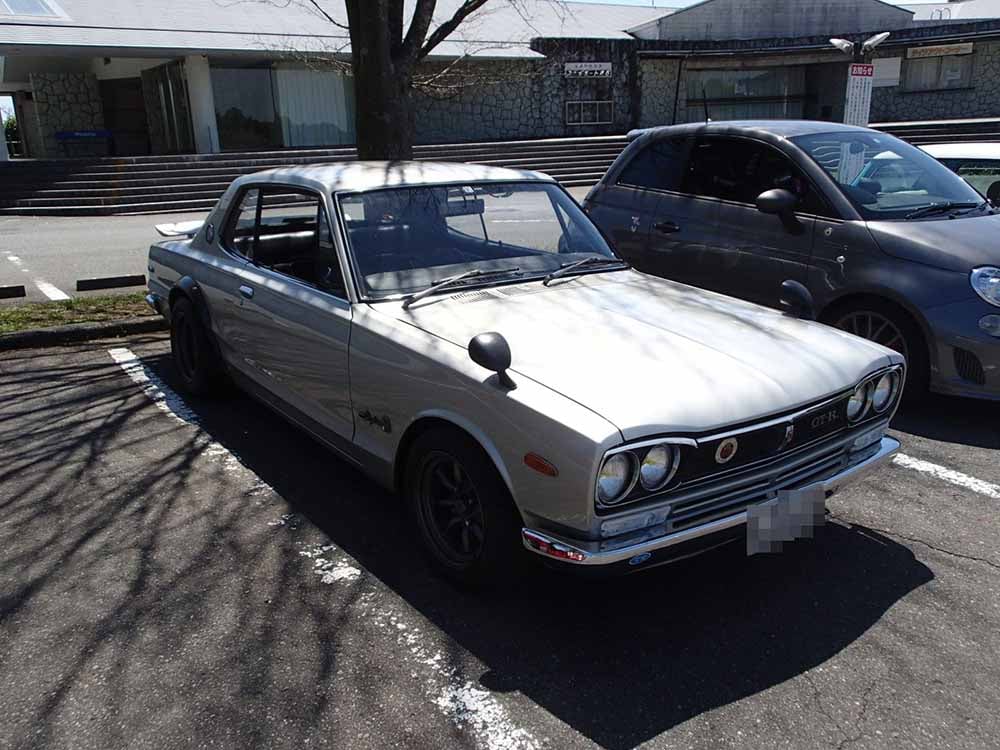
and a 1971 Lotus Europa
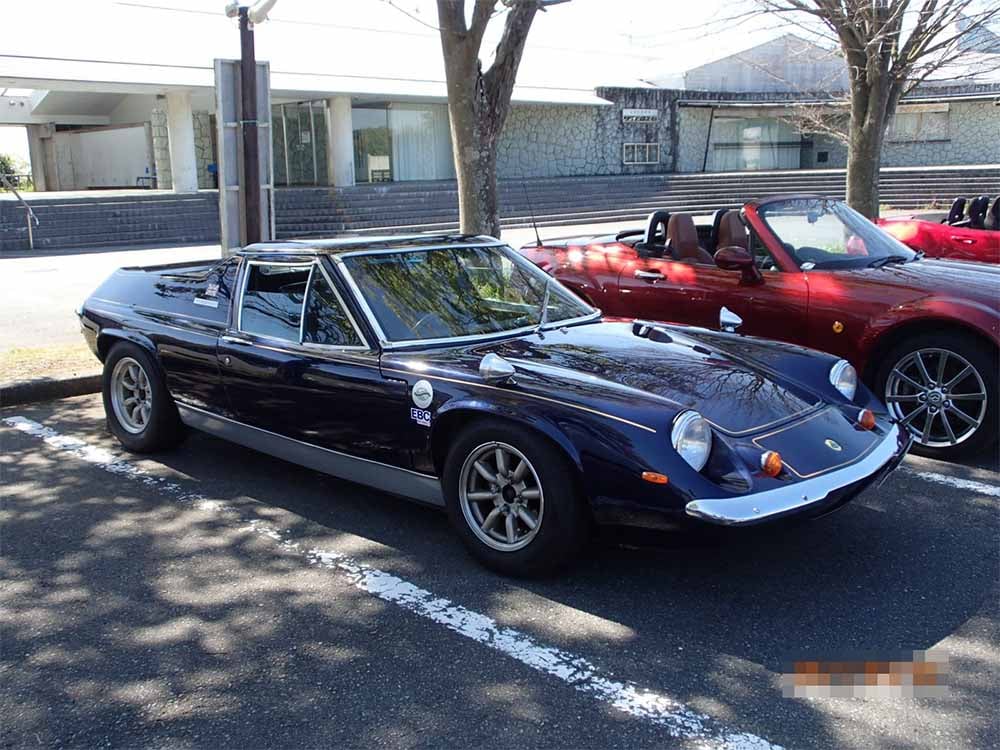
These are both dream cars for me, especially the Europa which, when I started to become mechanically and design aware (at about 18 years of age), was an example of my first mechanical love affair based on theory and not experience: The mid-engined sports car. (More about how that affair turned out in Part 2 of this blog post.)
The Hakosuka Skyline GT-R (KPGC-10 Chassis)
The Hakosuka Skyline was a car that came on my horizon only after I had been in Japan a while and had learned more about the higher end Japanese classic cars that guys “in the know” are paying big money for these days. And about used Hakosuka Skylines from Japan I’ll now say right off the top that the money is well worth it. Well, well worth it.
Now I know that some of the guys who follow my scribbles here on our Japan Car Direct blog might call foul on me here and say: “Just hold on, Dave, you’re always telling us that one of the main reasons to buy and import a used car from Japan is that you can get good used cars in good condition and you don’t have to pay big money. And now you’re saying pay pot money for a used Hakosuka and you’ll be happy.”
O.K. Fair point, guys, I am known as a bit of a skinflint when I go into the market for my own used cars here in Japan. I never pay much for the good secondhand cars that I buy and I’ve never had a loser from Japan. But good used car buying strategy is not just about paying as little as you can, it’s about getting the right used car for you at the right price. Sometimes it means putting just that little bit more cash into the used car purchase to get that good unit which is also just that little bit better. That’s what I did with my 2002 NB2 Miata / MX5, seen here on our Car Café Day beside a perfectly tuned example of an NA Miata. (The NA in the photo is also running the B6 engine, the 1,600cc unit, same as me. It’s a really sweet pure sports car engine, guys, really sweet.)
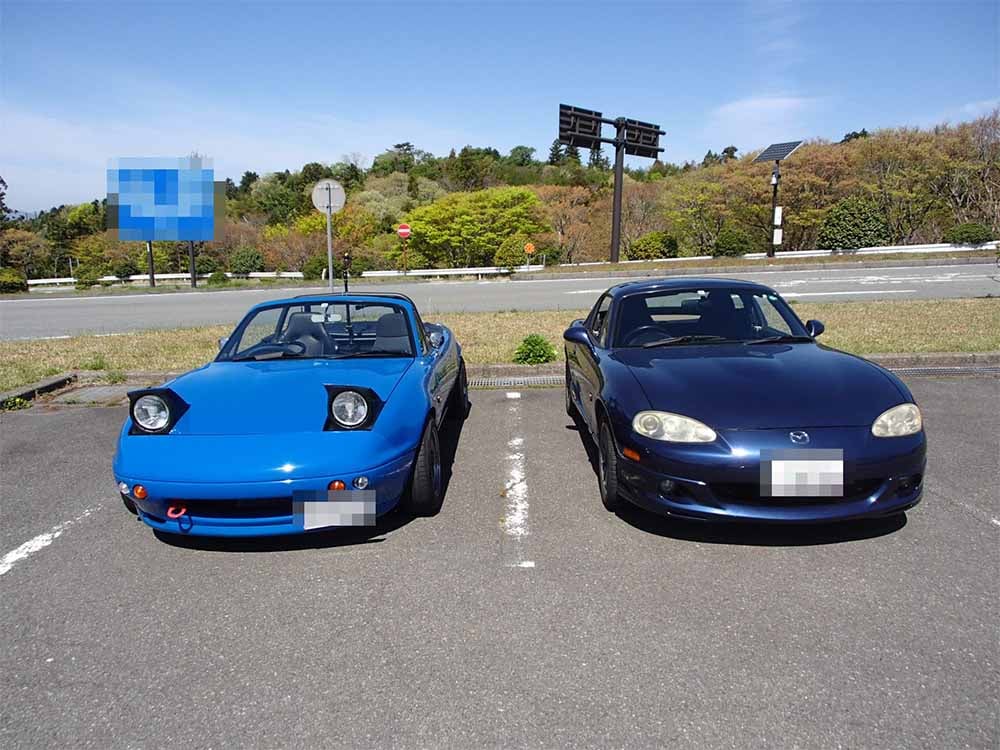
I didn’t go dirt cheap on my Miata. I spent a bit more for lower mileage and for certain options that I wanted. I’m driving that car now and have no regrets at all about spending those extra pennies. For the money I’ve spent on my used sports cars from Japan (my MR2, my Celica GT-Four, my WRX STi, my Mitsubishi Dangan, and my Miata) I’ve always been very satisfied with what I got out of each car compared to what I put into it. And, yes, I never spent much.
But when it comes to a good condition Hakosuka Skyline direct from Japan, especially a car that has been properly tuned, it won’t come to you for pennies, no. But, Boy! What a car you are going to have!
Let’s talk about the Hakosuka I drove. The car is the hobby of a man who, when not playing with his cars, is the president of a company in Kanagawa. Let’s just call him “The Prez,” since everybody in these blog posts should remain nameless for decency’s sake. The Prez is a truly generous man. How he could let me drive his car just like that….that’s generosity…big time.
First, some photos and some specs.
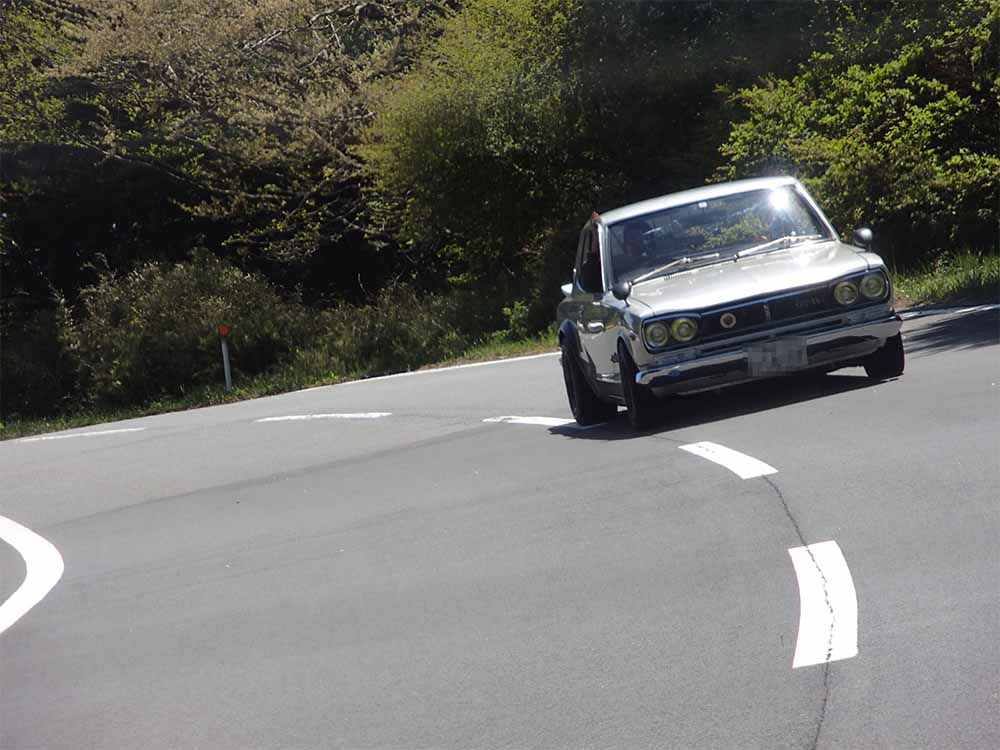
A Tuned Hakosuka
Now the car you’re looking at is a 1971 Skyline GT-R; the KPGC-10, the coupe body type, as opposed to the PGC-10, which is the four door sedan body type.
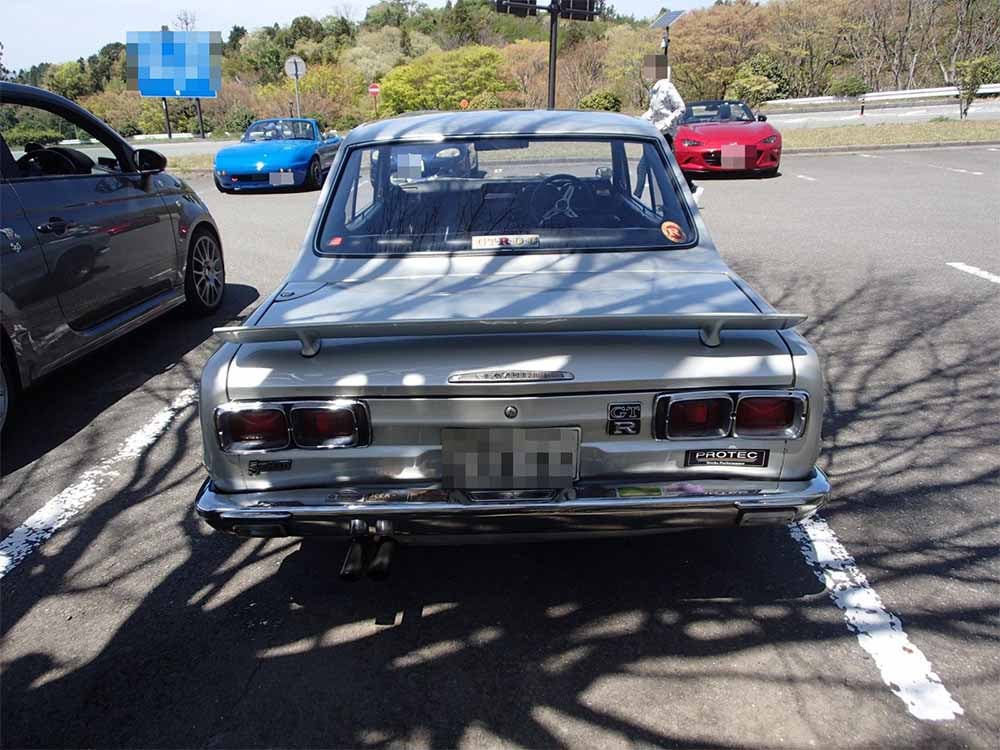
These cars are “IT” when it comes to classic Nissan Skylines. Now the whole Skyline range stated in 1957 and the early cars were made by Prince Motor Company which merged with Nissan in 1967. The car we’re looking at now is actually a sub-type of the third generation Skyline. These third gen GT-R sub-types were only in production from 1969 to 1972, and they were very different from your “bog standard” Skyline of the day. The two liter straight six engine was a performance unit right from the start, with racing heritage gained in the Prince R380.

In the stock version of these Hakosuka Skyline GT-Rs the straight-six two liter engine puts out 160ps. In the tuned Hakosuka I drove the engine had been bored and stoked to 2.3 liters, was running 11:1 compression with revised cam timing, straight through velocity stack intakes and hand built, specially designed, 3 into 2 into 1 exhaust header.. Power? How does 250ps strike you? It sure tuned my head when I put the pedal down, I’ll tell you that.
I’ll shut up for a minute while you look at these engine photos:
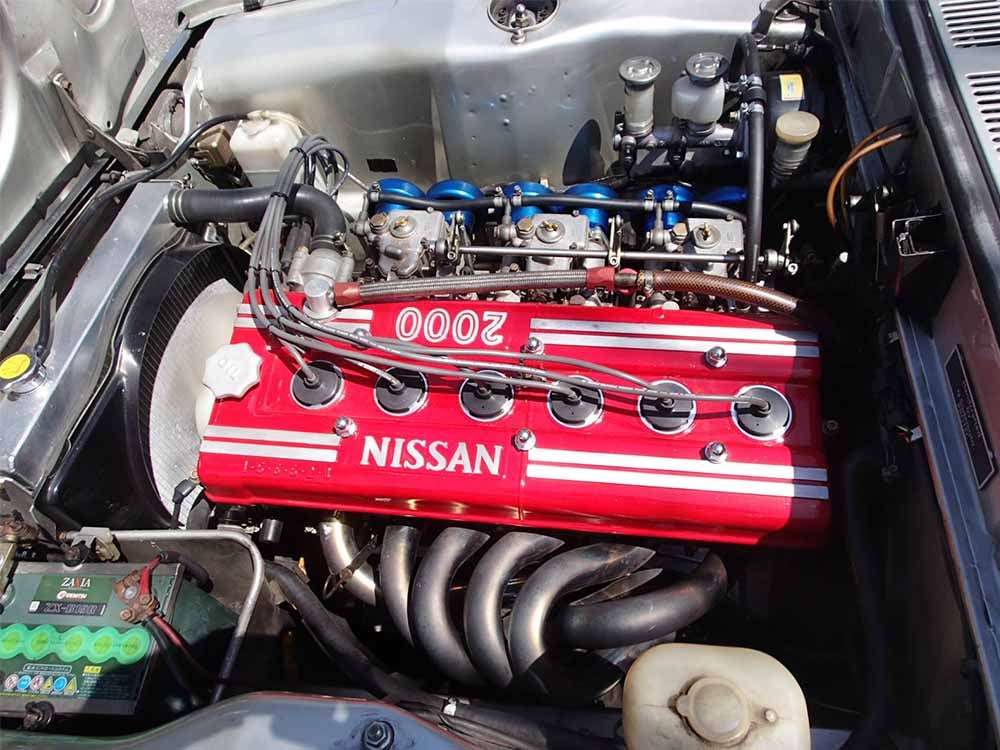
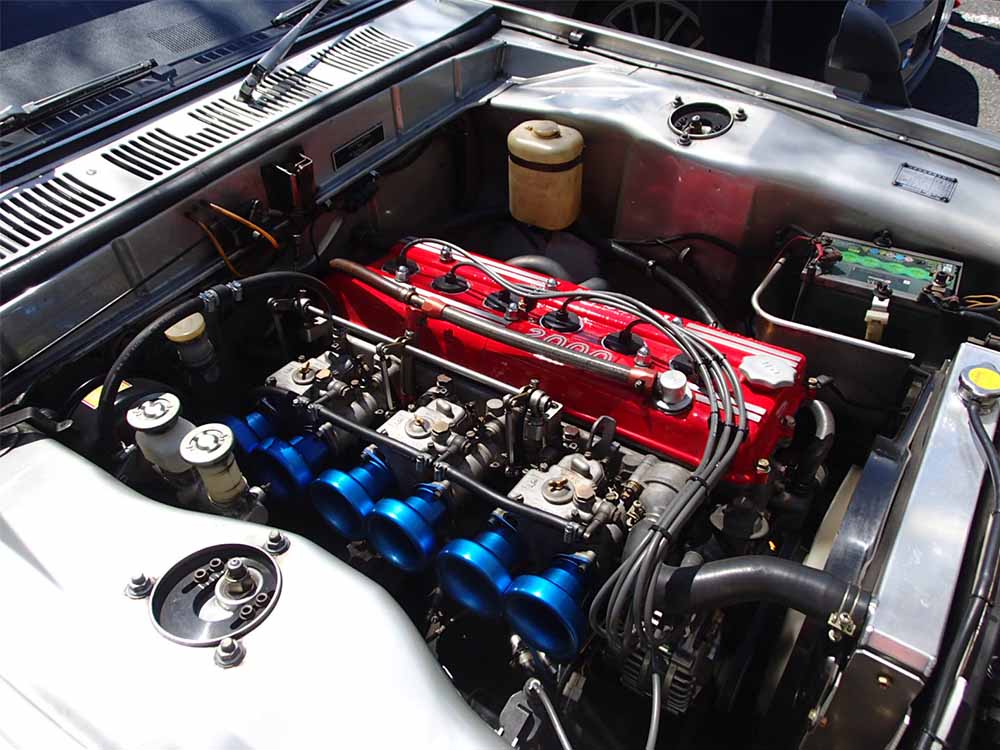

Look on and weep with desire my petrol head brothers, look on and weep!
“Oh, it’s nothing special under 6,000rpm,” the Prez told me, “but it’s not so bad above that.”
Yeah right! Not so bad. Well, when I drove that Hakosuka, it left me gasping.
Driving the Tuned Hakosuka
My first impression of the Hakosuka was favorable just from looking at it. Sitting in it, same impression: Good, sensible design. Controls all easy to hand, nothing particularly weird that I noticed. The five speed transmission shifted fairly easily and comfortably (NOT like the Europa!), steering was not too heavy for a non-power steering car weighing in at 1,100kgs. I liked it. The big straight six rumbled to life with no hesitation and had a warm and pleasing exhaust note at idle. I took the car slowly out of the parking lot, drove down the road to a clear straight spot, hit the throttle, and…..d**n near sh*t myself!!
From zero the car just leaps forward (LSD, of course). No hesitation, it was just cracker jack. You’ve got a car that weighs only 1,100kgs and has 250ps in it. What did I think it was going to do? Sleep?
Now we’ve got the straight: Throttle down and the engine gives a throaty roar that rises to an aggressive howl as the revs go up. Corner coming. Slow down, gear down: “Blatt!…..ROAR!….Rumble…Rumble” Time to pick up speed again, throttle down again, “Roar….HOWL!” Man, I LOVE this!!
But a key point was that all this power was coming from a normally aspirated engine. NA. No turbo, no turbo boost lag. Just foot down and power on and you are already in the next prefecture if you don’t watch yourself.
Steering feel was excellent: It was a light response to a light input and then, as I cornered more seriously, the steering wheel gave me a good loaded feeling that gave me good feedback and let me know what the car and I were doing. Brilliant sports steering, actually, and this car is 50 years old! Absolutely assured turning and tracking even at speed. Braking equally excellent. The brakes have been upgraded, of course, and we were running 225s on the front wheels and 250s on the rear on sticky rubber (but still street grade) so we had lots of rubber on the road to keep us where we wanted to be. The car had amazing, almost unbelievable, road holding. Suspension modifications gave us significant (5cm) low down. The clutch was very firm and the brakes were, too, but they were in no sense grabby and I could modulate my braking very smoothly with just a little practice.
The whole car just handled so well and accommodated all that power with no twitchiness or body flex or wheel lifting. I asked the Prez about what improvements he’d make to the chassis and he told me that the chassis was stock. Stock!
No wonder these cars are so highly valued as classic sports and tuning machines, the fundamental chassis is, along with the highly tunable engine, key to the whole package. My impression was that the Hakosuka Skyline I drove can easily handle serious speed and hard, fast cornering on the track, and yet, he was a “streetable” car. And he was a pleasure to drive as well for someone like me who is of the “old school” when it comes to enjoying the feel of the mechanical reality of a car when I am behind the wheel. Most modern cars, and too many modern sports and super cars, are designed to take away from the driver any feeling of the immediacy, the bumps and grinds, the slips and slides, of the road and the car. (Buddy’s got a late model Porsche Boxter, he says that he doesn’t feel he’s having fun until he’s doing 260km/h. Says he sometimes envies me my Miata, which can’t touch 260km/h but certainly feels thrilling and fun at half that speed.)
When I asked about reliability, the Prez said: “It’s actually quite reliable. I do regular maintenance and have had no major problems or surprises. Skylines were always well built cars, you know.”
A Classic Supercar to be Sure
So a tuned Hakosuka Skyline GT-R is a classic supercar to run with the best. And it won’t attract the automatic visual attention and suspicion of The Law that something like a classic Lamborghini Countach will. It’s decently reliable and quite practical; yes, full back seats and good head room. It’s also a classic that will hold its value going forward, and this is important for people looking to buy a high end classic car from Japan for wealth protection, as well as for the joy of having and driving the machine itself. We are all now far too familiar with shaky economic times and financial wipeouts and a car like a Hakosuka will find serious buyers in various markets, in the West (US and Europe) and back in Japan. Since those economies are no longer in lock step, with Japan having “de-coupled” to a notable degree these days (time of writing: summer 2021), a classic Skyline certainly has a broad, worldwide, potential market base and is promising as a wealth protection vehicle.
What’s in a Name?
Why is it called “Hakosuka?” Look at it again:

What’s your take on the styling? A bit “boxy?” Yep. I’d say so, too.
In Japanese, a box is “hako.” The short word for Skyline is “suka.” So, the boxy type Skyline was dubbed the “hako-suka.”
And there you are.
And why was it a “Car Café” day anyway? Well, it’s like this: The guy I know who introduced me to this group of classic car and sports car owners here in Japan is a guy I used to work with back in my days at Kanto Auto Works. He’s retired now and back in Yokosuka with his beloved Lotus (which joined us on the day)
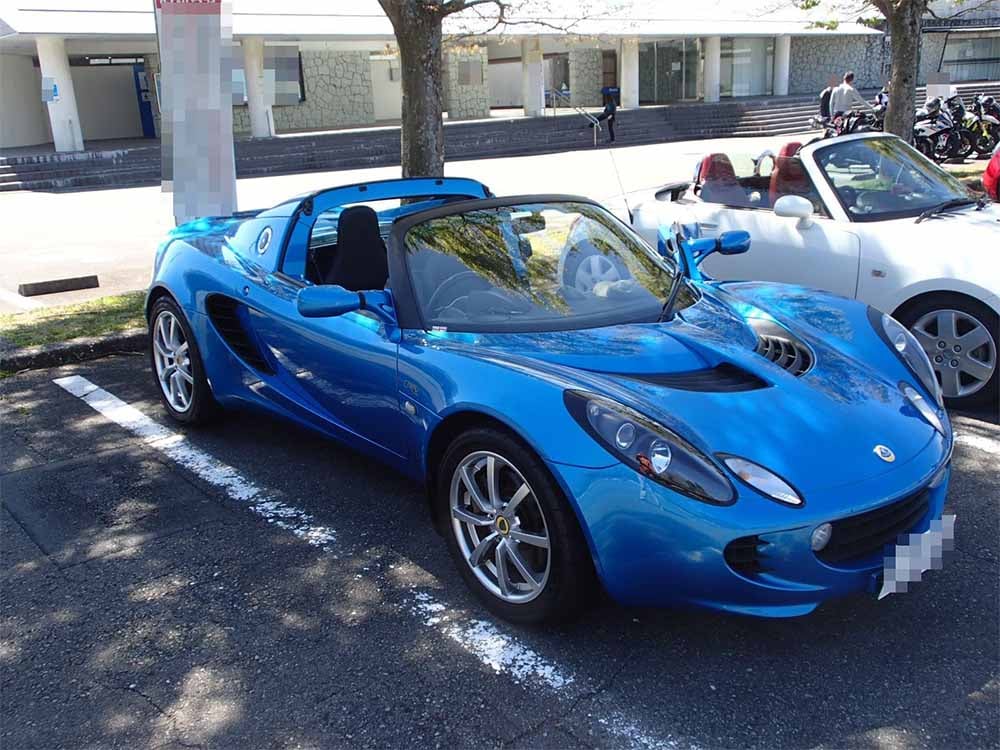
and he frequents a café where many of the patrons are car guys, see? And so they get together car cars days, right? And so I got invited and, ta da! …..there I was driving a 1971 tuned Hakosuka Skyline and having the time of my life. It all makes sense.
And there you are.
Now, for anyone thinking of importing a Hakosuka or other used Skyline direct from Japan, I recommend getting in touch with us here at Japan Car Direct (you can register here) and we can get things rolling to get you the best used Skyline from Japan at the best price. I can see that these cars will have serious appeal (style, grunt) to people like me who come from North America and so guys from the USA and Canada should have quick look at the import regs, here for the USA and here for Canada.
And I understand that these classic Skylines have a serious following “down under,” so for guys wanting to import one from Japan to Oz or New Zealand, you’ll find the shipping regs here for Australia and here for New Zealand.
As you’ll see from the regulations, it’s super easy now to import these older classics to the USA, Canada, Australia, and New Zealand. Good Road!
Of course, with the UK regulations (here) as they stand, there is no problem importing a good used Skyline to Great Britain, and I know that a very respectable number of units have found appreciative and loving homes in old Blighty.
I was ever so impressed with the 1971 Nissan Skyline, the “Hakosuka,” I drove. It was a privilege and a thrill. Owning a car like that will be really something. I don’t think that you’d ever be disappointed. Ever.
Next up: I drive the original Lotus Europa on our Car Café Day.


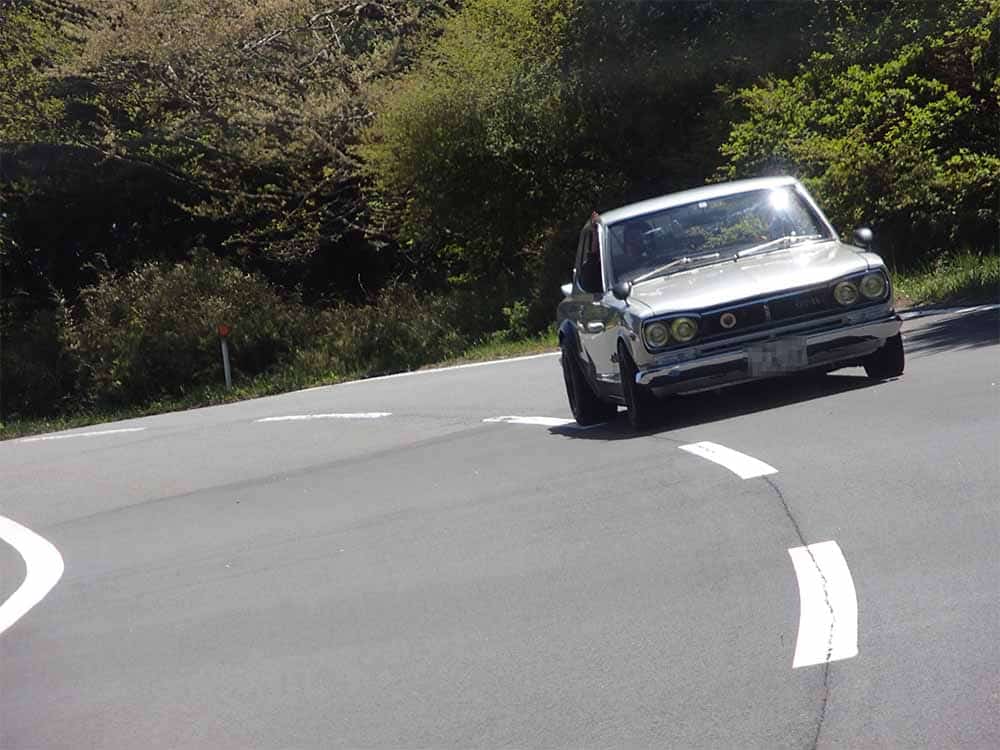






Leave your questions and comments, we look forward to replying!